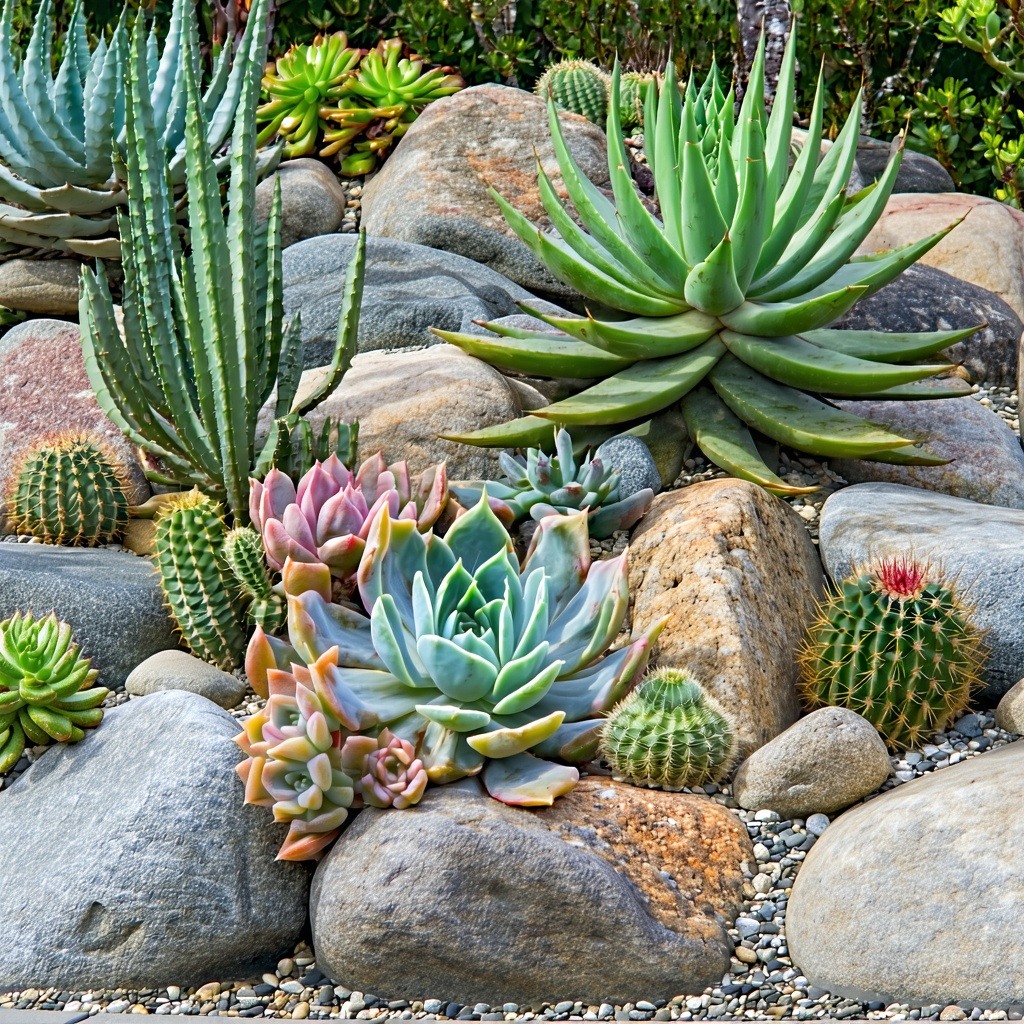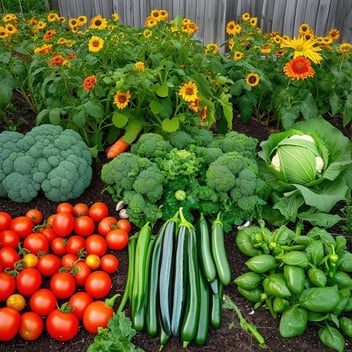Growing Succulents and Cacti in South East Queensland Rockeries
Introduction
South East Queensland’s subtropical climate presents a unique opportunity for gardeners to cultivate breathtaking rockeries filled with succulents and cacti. These resilient plants, renowned for their striking forms and low-maintenance nature, create stunning, sculptural landscapes that thrive in well-draining, rocky environments. Whether nestled between rugged stones or cascading over rock formations, succulents and cacti add texture, colour, and visual intrigue to any garden.
This guide explores how to successfully grow these hardy plants in rockeries, ensuring year-round beauty with minimal effort.
Understanding the Climate and Soil Conditions
Subtropical Challenges: Heat, Humidity, and Rainfall
South East Queensland enjoys warm temperatures for most of the year, punctuated by seasonal rainfall and occasional high humidity. While these conditions are ideal for many tropical plants, succulents and cacti require well-drained soils and protection from excessive moisture to prevent rot.
The biggest challenge lies in managing the balance between periods of dry heat and sudden downpours. Selecting the right species and designing the rockery to enhance drainage is critical to success.
Optimizing Drainage for Rockery Success
Succulents and cacti despise waterlogged roots. Amending the soil with coarse sand, gravel, or perlite creates a free-draining environment that mimics their natural habitat. Elevating plants on mounds or positioning them in crevices between rocks allows excess water to drain away swiftly.
Choosing the Right Succulents and Cacti
Hardy Succulents That Thrive in South East Queensland
Several succulents flourish in the region’s climate, offering a spectacular mix of colours and textures. Some standout choices include:
- Aloe vera – A medicinal and ornamental plant with spiky, fleshy leaves.
- Echeveria species – Rosette-forming succulents with delicate, pastel-hued foliage.
- Sedum (Stonecrop) – Low-growing, drought-tolerant ground covers that soften rock edges.
- Kalanchoe tomentosa (Panda Plant) – A fuzzy-leaved beauty that withstands dry spells effortlessly.
Resilient Cacti for Stunning Structural Appeal
Cacti provide bold, architectural statements within a rockery. Some ideal choices include:
- Opuntia (Prickly Pear) – Hardy, sculptural, and covered in paddle-like segments.
- Echinopsis (Hedgehog Cactus) – Small, globe-shaped cacti that produce spectacular flowers.
- Cereus peruvianus (Peruvian Apple Cactus) – A tall, columnar cactus perfect for height and contrast.
Designing a Rockery for Succulents and Cacti
Placement of Rocks to Enhance Growth and Aesthetics
Rocks are not just decorative; they play a vital role in regulating temperature, providing shade, and preventing soil erosion. Placing larger boulders strategically around your rockery creates microclimates, offering cooler spots for moisture-sensitive plants. Smaller stones and gravel can be used to define pathways or create a naturalistic appearance.
Creating Microclimates for Different Species
Positioning shade-loving succulents, such as Haworthia, near taller rocks provides relief from intense midday sun, while sun-loving cacti can be planted in more exposed positions.
Planting and Establishment Techniques
Best Practices for Planting Succulents and Cacti in Rock Gardens
- Dig shallow planting holes to accommodate roots without burying stems.
- Add a layer of gravel around the base to prevent moisture buildup.
- Space plants apart to allow for air circulation and future growth.
The Role of Mulching and Ground Covers
Gravel, pebbles, or coarse sand serve as excellent mulches, reducing soil erosion and suppressing weeds. Low-growing succulents, such as Senecio serpens (Blue Chalk Sticks), make great living mulches while adding additional texture.
Watering and Maintenance for Long-Term Success
Irrigation Strategies to Prevent Overwatering
Water deeply but infrequently, mimicking natural drought conditions. In summer, once-a-week watering suffices, while in winter, plants may not require additional water at all. Always water at the base, avoiding moisture on the leaves to prevent fungal infections.
Seasonal Care: Summer Heat and Winter Rains
- Summer: Provide afternoon shade for heat-sensitive succulents.
- Winter: Reduce watering frequency to prevent root rot from excessive rainfall.
Common Challenges and How to Overcome Them
Managing Excess Moisture in Wet Seasons
If unexpected heavy rainfall occurs, improve drainage by slightly elevating water-sensitive plants or introducing additional gravel to increase runoff.
Dealing with Pests and Fungal Issues
- Aphids and Mealybugs: Treat infestations with neem oil or insecticidal soap.
- Fungal Rot: Improve air circulation and avoid overhead watering.
The Benefits of Succulents and Cacti in Rockeries
Water-Wise Gardening and Sustainability
Succulents and cacti are champions of water conservation, requiring minimal irrigation while adding year-round interest. Their adaptability to harsh conditions makes them an eco-friendly choice for rockery gardens.
Aesthetic and Biodiversity Contributions
Beyond their sculptural beauty, these plants attract pollinators such as bees and butterflies. The nectar-rich flowers of many species provide sustenance to beneficial insects, enriching the garden’s ecosystem.
Conclusion
Creating a thriving rockery filled with succulents and cacti in South East Queensland is a rewarding endeavour. By understanding the region’s climate, choosing the right species, and implementing strategic design techniques, gardeners can craft a visually stunning and low-maintenance landscape. Whether you seek bold architectural forms or delicate trailing succulents, a well-planned rockery will flourish year-round, requiring little more than occasional care and admiration.




